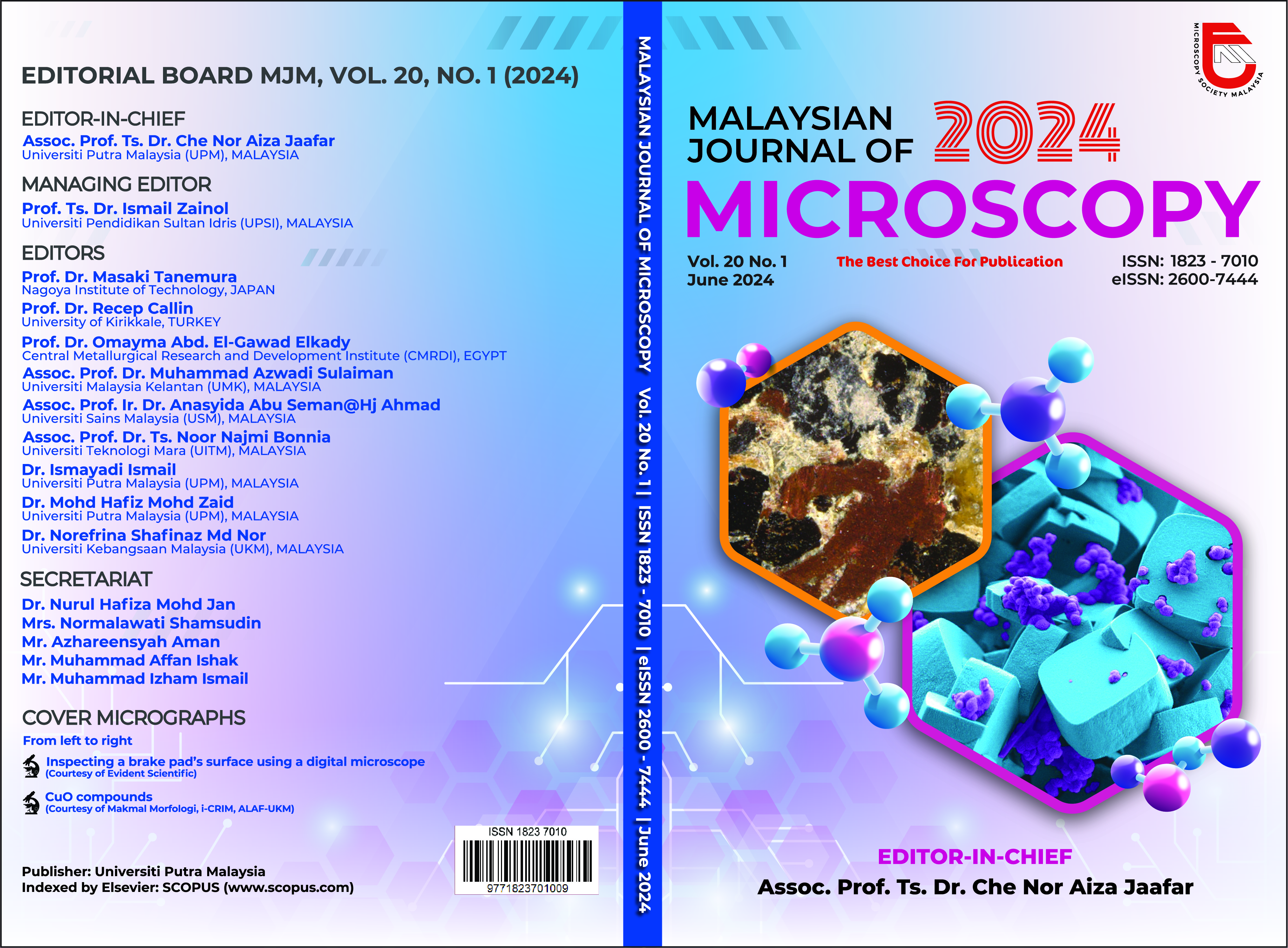THE IMPACT OF EXTRUSION AND COMPRESSION MOLDING TEMPERATURES ON FOAM MORPHOLOGY AND TENSILE PROPERTIES OF BIOCOMPOSITES MADE FROM RICE HUSK AND POLYOLEFIN
Abstract
Polymer foam is known as a lightweight and porous material with various advantages over neat polymer materials such as low density, great acoustic absorption, and low cost. In this study, the solid and azodicarbonamide (ADC)-foamed biocomposites made from rice husk (RH) and polyolefin blend (recycled high-density polyethylene (rHDPE)/recycled polyethylene terephthalate (rPET)) were prepared by extrusion and compression molding. The RH and polyolefin blend composition was fixed at 70/30 wt%. This research focused on the effect of processing temperatures including extrusion temperature profiles (P1: 170-195-190-185 °C, P2: 160-185-180-175 ºC) and compression temperature varied at 195, 200, and 205 °C affected the foam morphology, density, and tensile strength of the biocomposites. By adding ADC foaming agent at 2 parts per hundred resins, the density and tensile strength of the biocomposites generally reduced which aligned with the foam (porous structure) formed as shown in the microscopic structure analyzed by Field Emission Scanning Electron Microscope (FESEM). From this preliminary finding, the best processing temperature of the formulated biocomposite foams was achieved at P2 (extrusion) and 195 ºC (compression) with the highest density reduction (10.63 %) and tensile strength at 10.8 MPa. The research indicated that lightweight biocomposite foam offers potential for sustainable applications such as the packaging industry, formwork, flooring, and automotive industry in the future.
Keywords: Biocomposite foam, azodicarbonamide, density, foam morphology


